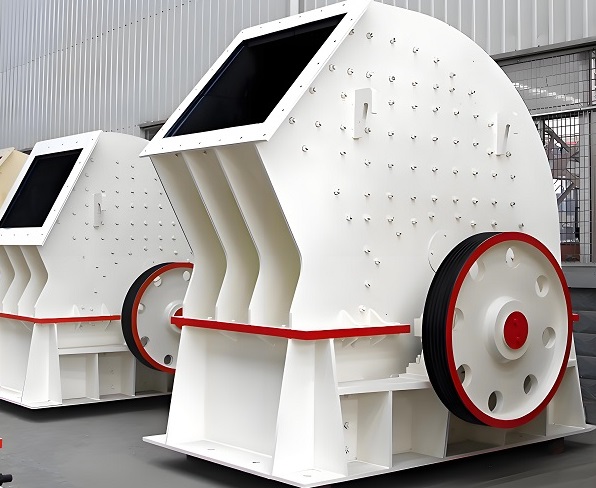
Hammer crusher is a device that crushes materials by impact, and is divided into two types: single rotor and double rotor. It has a simple structure, light weight, and strong adaptability. It is widely used in cement, chemical, electric power, metallurgy and other industrial fields, and is mainly used to crush medium hardness and brittle materials, such as limestone, slag, coke, coal, etc.
Hammer crusher is a kind of efficient crushing equipment, which mainly crushes materials in the form of impact. Hammer crusher plays an important role in the crushing industry with its high efficiency, energy saving and environmental protection. The following is a detailed introduction to hammer crusher:
Hammer crusher is mainly composed of box, rotor, hammer head, impact liner, screen plate and other parts. Several rows of hanging hammer bodies are installed on the main shaft of the crusher. The hammer head is hinged between each row of hanging hammer bodies through a pin shaft. The working surface can be replaced after wear. In order to prevent the axial movement of the hanging hammer body and the hammer, the two ends of the hanging hammer body are fixed with a clamping hammer disc and a locking nut. The two ends of the rotor are supported on rolling bearings, and the main shaft and the motor are directly connected with an elastic coupling. The arc-shaped unloading screen bar is installed under the rotor, and the two ends of the screen bar are installed on the crossbeam, and the arrangement direction is perpendicular to the movement direction of the rotor.
The casing of the hammer crusher consists of the lower body, the rear upper cover, the left wall and the right wall, which are connected as a whole by bolts. The inner wall of the casing is inlaid with a high manganese steel liner, which is convenient for the replacement of the liner after wear. In order to facilitate maintenance, adjustment and replacement of screen bars and hammers, inspection holes are opened on the lower body and both side walls.
The hammer crusher mainly relies on impact energy to complete the material crushing operation. When working, the motor drives the rotor to rotate at high speed, and the material enters the crusher cavity evenly, and is crushed by the impact, shearing and tearing of the high-speed rotating hammer. At the same time, the gravity of the material itself causes it to rush from the high-speed rotating hammer to the baffle and screen bars in the frame. Materials larger than the size of the screen hole are retained on the screen plate and continue to be hit and ground by the hammer until they are crushed to the required discharge particle size and finally discharged from the machine through the screen plate.
There are many types of hammer crushers. According to the number of rotors, they can be divided into single-rotor and double-rotor types; according to the rotation direction of the rotor, they can be divided into irreversible and reversible types; according to the arrangement of the hammers, they can be divided into single-row and multi-row types. In the former, the hammers are installed on the same rotating plane, and in the latter, the hammers are distributed on several rotating planes. In addition, there are single-stage hammer crushers, high-efficiency hammer crushers, sand blasting machines, vertical shaft hammer crushers, reversible hammer crushers, ring hammer crushers, etc.
Hammer crushers are widely used in cement, chemical, electric power, metallurgy and other industrial sectors for medium and fine crushing of medium hardness materials. In addition, it can also be used in crushing production lines, sand making production lines, and to replace cone crushers in mineral processing production lines.
Hammer crushers, with their unique working principle and structural design, show the characteristics of high efficiency, energy saving and environmental protection. It has a large crushing ratio and high production capacity, and can crush materials to the required particle size at one time, reducing energy consumption and production costs. At the same time, the hammer crusher has a simple structure, easy operation and maintenance, low failure rate and long service life. In addition, the equipment has strong adaptability and can be widely used in cement, chemical, electric power and other fields to crush various medium hardness and brittle materials. Most importantly, the hammer crusher adopts a sealed design, which effectively solves the problem of dust pollution and meets the green production requirements of modern industry.
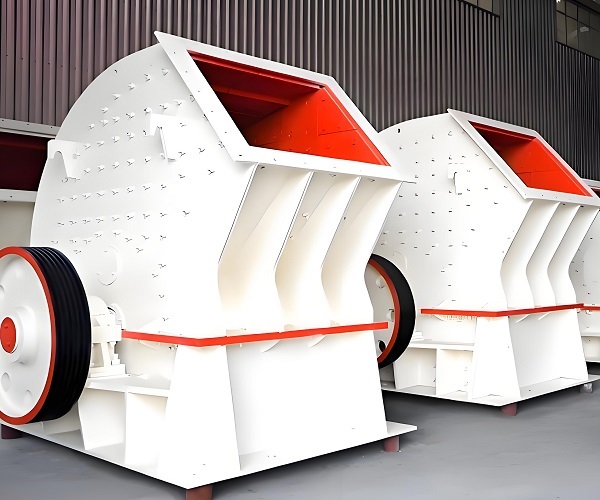
The key points for purchasing a hammer crusher mainly include the following: 1. Material characteristics Clearly understand the characteristics of the material to be crushed, such as hardness, moisture, and adhesion, which is the basis for choosing a suitable model. Materials with different characteristics have different requirements for the wear degree, crushing efficiency, and production capacity of the crusher.
2. Production requirements Determine the capacity and power of the crusher according to production requirements. Make sure that the production capacity of the selected equipment meets the requirements of output and quality, and avoid equipment overload or insufficient production capacity.
3. Equipment stability and durability Consider the stability and durability of the equipment. A high-quality crusher should have higher stability and reliability, higher operating rate and production efficiency, lower failure rate, and longer service life.
4. Maintenance and repair costs Understand the maintenance and repair costs of the equipment. High-quality equipment usually has lower maintenance costs and longer service life, which helps to reduce overall operating costs.
5. Manufacturer reputation and service Choose a manufacturer with a good reputation and high-quality service. This ensures high-quality equipment and professional technical support, as well as timely after-sales service and spare parts supply.
6. Price factor On the premise of ensuring quality, consider the price factor. By comprehensively comparing the quotations and performance of different manufacturers, choose a crusher with high cost performance. But avoid blindly pursuing low prices and ignoring equipment quality and performance. When purchasing a hammer crusher, you need to consider material characteristics, production requirements, equipment stability and durability, maintenance and repair costs, manufacturer reputation and service, and price factors. By comprehensively evaluating these factors, you can choose the crusher equipment that best suits your production needs.
Hammer crusher is a highly efficient crushing equipment. With its unique structural design and working principle, it realizes efficient and energy-saving crushing of materials. It has the advantages of large crushing ratio, uniform finished product particle size, simple operation and low maintenance cost. It is widely used in building materials, chemical industry, electric power and other fields. High-quality hammer crusher not only has stronger wear resistance and impact resistance, but also has higher crushing efficiency and longer service life.
Hammer crusher is a highly customizable crushing equipment. Its customization is reflected in the ability to adjust key parameters such as equipment model, specifications, crushing ratio, production capacity, etc. according to the specific needs of customers. In addition, key components such as hammer head and screen plate can also be customized according to material characteristics and crushing requirements to ensure efficient operation of the equipment and quality of the finished product. This high degree of customizability enables hammer crusher to be widely used in a variety of industries and fields.
Hammer crushers stand out for their excellent performance. They have high crushing efficiency, large crushing ratio and stable finished product particle size to ensure efficient production. The equipment has a compact structure and smooth operation, reducing energy consumption and noise. Hammer crushers are highly wear-resistant, easy to maintain and have a long service life. Its high performance makes it an ideal choice for crushing operations in many industries.
The hammer crusher has the characteristics of unique structure, easy operation, high efficiency and energy saving. Its advantages are large crushing ratio, no material blocking, adjustable discharge particle size, and good product particle shape. At the same time, the hammer crusher has strong impact resistance, long service life, and the wear-resistant retaining ring is easy to maintain and can reduce labor intensity. In addition, it has a wide range of applications and can meet the crushing needs of different industries. It is an indispensable crushing equipment in many industrial production.
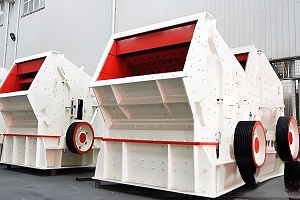
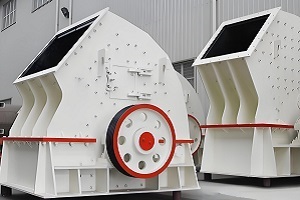
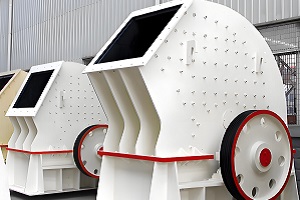
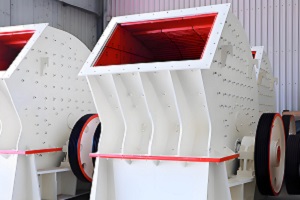
The working principle of the hammer crusher is to impact, shear and grind the material based on the high-speed rotating hammer head, so as to achieve the crushing of the material. The following is an introduction to the working principle of the hammer crusher:
1. Basic working principle
The working principle of the hammer crusher is relatively simple and efficient. When the motor is started, the rotor is driven to rotate at high speed through the V-belt or large pulley. At this time, the material to be crushed is evenly fed into the crushing chamber of the crusher by the feeding equipment. In the crushing chamber, the high-speed rotating hammer head strongly impacts and shears the material, so that the material is quickly crushed. At the same time, after being impacted by the hammer head, the material will also gain a certain amount of kinetic energy, and hit the impact plate at high speed or collide with other materials, further achieving the crushing effect.
2. Details of the crushing process
Primary crushing: After the material enters the crushing chamber, it is first directly impacted by the high-speed rotating hammer head, which is the main stage of material crushing. The kinetic energy and shape design of the hammer head enable the material to be quickly crushed into smaller particles.
Secondary crushing: After being impacted by the hammer head, the material continues to be hit and ground by the hammer head in the crushing chamber. At the same time, the materials will collide and rub against each other, further promoting the crushing process.
Screening and discharge: The crushed materials are screened through the screen plate. Materials smaller than the screen hole size are discharged from the crusher smoothly, while materials larger than the screen hole size continue to be hit and ground by the hammer in the crushing chamber until the required particle size is reached.
3. Functions of key components
Rotor: The rotor is the core component of the hammer crusher, which supports the hammer and drives it to rotate at high speed. The design and material selection of the rotor directly affect the crushing efficiency and service life of the crusher.
Hammer: The hammer is the main tool for crushing materials, and its shape, material and weight will affect the crushing effect. High-quality hammer material and reasonable weight design can improve crushing efficiency and extend service life.
Impact plate and screen plate: The impact plate is used to withstand the impact of the material and rebound back to the crushing chamber to promote secondary crushing of the material. The screen plate is used to screen the crushed material to ensure that the particle size of the discharged material meets the requirements.
4. Advantages and Applications
Hammer crusher has the advantages of simple structure, convenient operation, large crushing ratio and high production efficiency. It is suitable for crushing a variety of medium hardness and brittle materials, such as limestone, slag, coke, coal, etc. In cement, chemical, electric power and other industrial fields, hammer crusher has been widely used and recognized.
The working principle of hammer crusher is based on the impact, shearing and grinding of materials by high-speed rotating hammer head. Through reasonable structural design and the synergy of key components, it achieves efficient, energy-saving and environmentally friendly crushing effect.

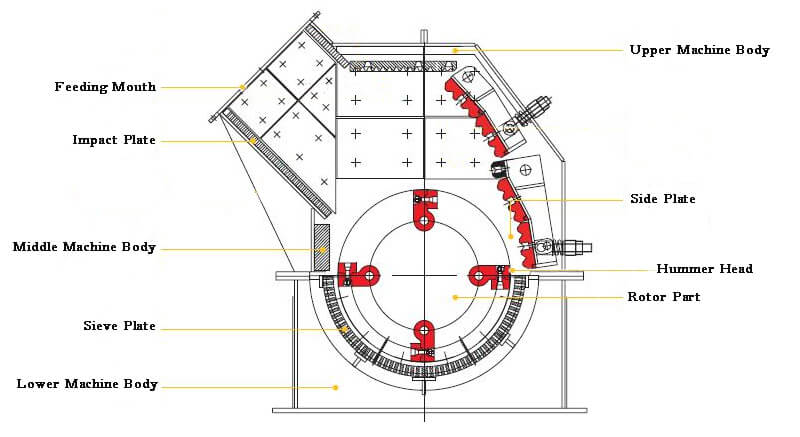
| Type | Model | Specification (mm) | Feed Size (mm) | Discharge Size (mm) | Capacity (t/h) | Motor Power (kw) | Weight (t) | Dimensions (mm) |
| Hammer Crusher | PC-64 | Φ600X400 | <100 | <15 | 12-15 | 18.5 | 1.3 | 1935x1100x1122 |
| PC-86 | Φ800X600 | <200 | <10 | 18-24 | 55 | 2.5 | 2523x1525x1020 | |
| PC-0808 | Φ800X800 | ≤50 | <5 | 15-20 | 55 | 5.18 | 1590x1935x1390 | |
| PC-108 | Φ1000X800 | <200 | <13 | 20-50 | 110 | 6.5 | 3514x2230x1515 | |
| PC-1010 | Φ1000X1000 | <200 | <13 | 40-60 | 115 | 7.6 | 2230x2220x1515 | |
| Impact Hammer Crusher | PFC-1210 | Φ1250X1000 | <200 | <10 | 60-80 | 130 | 14.4 | 2408x2247x2392 |
| PFC-1412 | Φ1400X1200 | <250 | <20 | 70-100 | 150 | 17.5 | 2500x2625x2760 | |
| PFC-1616 | Φ1600X1600 | <800 | <20 | 150-220 | 315 | 34 | 2840x3380x3120 | |
| PFC-2018 | Φ2000X1800 | <800 | <25 | 350-450 | 630 | 75.1 | 7400x3700x4511 | |
| Single-stage Hammer Crusher | TPCD-1412 | Φ1420X1200 | <600 | <25 | 70-120 | 185 | 25.39 | 3285x3104x3039 |
| TPCD-1616 | Φ1650X1640 | ≤800 | <25 | 160-220 | 315+5.5 | 41 | 3420x3300x3230 | |
| TPCD-2022 | Φ2000X2200 | <1500 | <25 | 400-600 | 800+45 | 145 | 6000x5000x4800 |
*The output will vary according to different materials, feed particle size and other factors.
Save Time! Get A Detailed Quotation Quickly.
